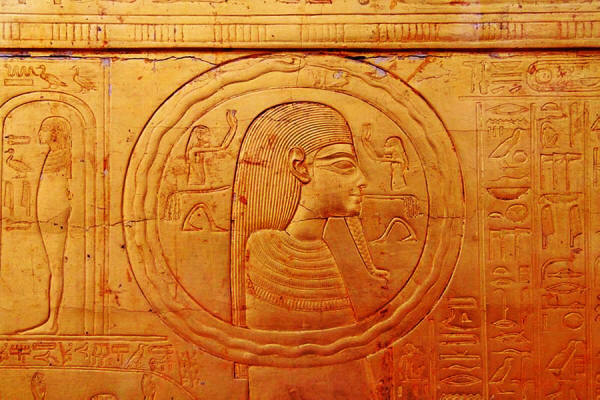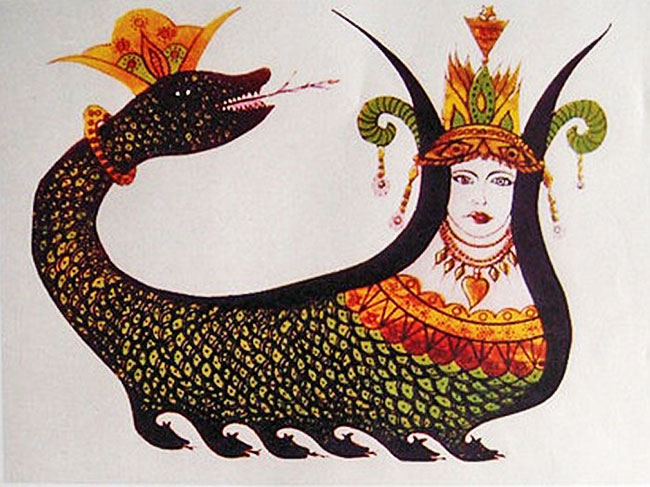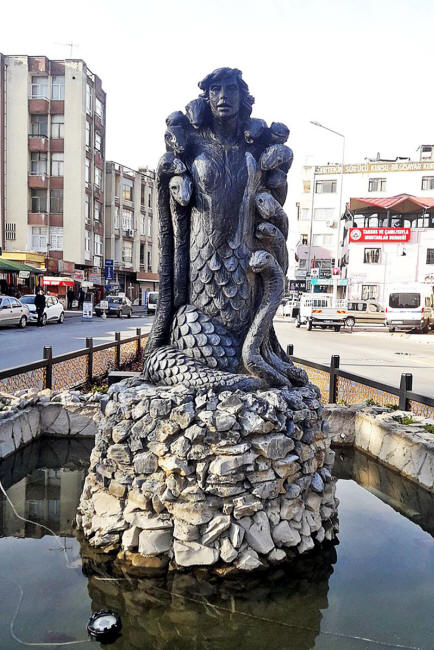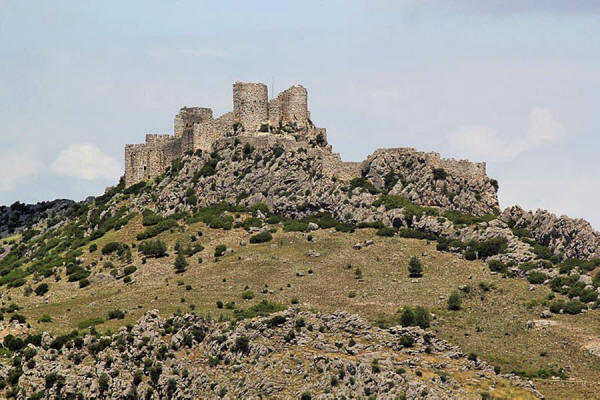|
Shahmaran was the Queen of the Serpents. Credit: Adobe Stock - T Studio
How far should a person
go to become a wise man or woman? There are times when we wish we
never experienced certain events because the price we paid for
gaining wisdom was much too high.
Although he spent the
rest of his life as a famous and respected wise man, his heart was
always filled with sorrow. No matter how much he tried, he could
never forget about the wonderful, intelligent creature he had met
and lost.
Many ancient civilizations say they were guided by the wise Serpent People who gave them knowledge of,
...and taught Earthlings all they needed to know to establish a civilization.
Evidence of ancient serpent worship can be found worldwide.
The serpent frequently
appears in myths and legends. Artifacts and carvings made in the
image of the snake have been found all across the world. First known representation of the ouroboros on one of the shrines enclosing the sarcophagus of Tutankhamun.
Credit: Djehouty - CC BY-SA 4.0
Ancient texts and carvings show our ancestors frequently used the Ouroboros as an infinity symbol.
The Neolithic site Göbekli Tepe in Turkey is famous for its massive T-shaped stone pillars.
On these huge megaliths, there are many engravings of animals, and among them, the serpent is one of the most frequently depicted creatures. Legends of various serpent-like beings are common across Anatolia.
The Turks, Kurds, Yezidis, and Iranians have kept the memory of the wise serpents of the past alive.
Her legend is very old
and there are many variations of the same story. Being half-human
and half-snake Shahmaran reminds of the wise Nagas encountered in
Hindu mythology.
In the Turkish version of the legend the young man who met Shahmaran was named Tahmasp (in other versions of the story he is known as Yada Jamsab, or Jamisav).
Tahmasp was handsome, but
poor and worked as a woodcutter.
His friends didn't bother to wait for him and left him in the well.
In other versions of the
legend, it is said Tahmasp and his friends found a cave with honey.
Shahmaran depicted in a Kurdish calendar.
Credit: MikaelF - CC BY-SA 2.0
He could not reach the surface and his friends were gone so he decided to explore well.
Suddenly he spotted a large hole at the bottom of the well.
Being a brave and curious young man, Tahmasp grabbed a knife and made the hole big enough to squeeze through. He crawled down and reached a deep, dark cavern.
At this point, he was now
so tired from exhaustion that he fell asleep.
The young man was
sitting, shaking not knowing what to do. He was so frightened that
he closed his eyes. However, the snakes didn't appear hostile, they
were simply looking at him.
Tahmasp was startled and speechless. He had never seen any remarkable creature like this before.
The next morning, Shahmaran returned and showed him the magnificent realm of the serpents.
Tahmasp was taken to a large hall and beautiful garden. He ate breakfast and he was captivated by the beauty of this mysterious snake woman.
As time passed, Tahmasp became a permanent resident in the underground land of the serpents. He felt safe and appreciated the company of these colorful intelligent animals. He and Shahmaran fell in love and though he was now a different man. He was happy, or at least he thought so.
After a while, he
realized that although he loved Shahmaran he did miss his family.
She allowed him to return to the world above, but only under one condition.
Shahmaran explained he should never bathe with other people because contact with water would reveal he had the skin of a snake.
Many years passed and everything was fine, until one day the king of the city became sick. Doctors said the ruler could only be cured if he ate the flesh of Shahmaran.
Somehow the king had learned there was someone in the city knew where to find Shahmaran and the land of the snake, but he had no clue who it was. The king ordered to pour water on all inhabitants.
This would reveal who had
the skin of a snake. Statue of Shahmaran in Tarsus.
Credit: CeeGee - CC BY-SA 4.0
Shahmaran who knew she was going to die, said:
The guards killed Shahamran and cut her into three pieces.
The Captain of the Guard
and the King wished to become wise and the King wanted to live long,
so they ate her tail. Tahmasp wanted to die so he consumed part of
her head.
The King and the Captain
of the Guard died, but Tahmasp survived. The truth was that the
wisdom of Shahmaran filled her head and now was part of Tahmasp.
He couldn't bear the
sorrow of losing Shahmaran. He left his home and wandered from land
to land, from mountain to mountain, and became known far and wide as
a wise man.
was once home to Shahmaran. Credit: Klaus-Peter Simon
CC
BY-SA 3.0
Shahmaran's story is still popular today.
Descriptions of her
underground kingdom and the land of the snakes have been a subject
of many books, including Arabian Night Tales...
|






